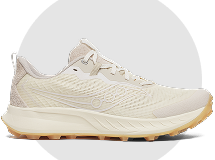15% Off Your Next Purchase Over $75: Offer valid with purchase of full-price purchase of $75 or more. Not valid on collaborations or prior purchases. Cannot be combined with any other offer, promotion, coupon or discount. Offer valid on saucony.com US orders only. Promotional codes have no cash value. Void where prohibited by law. Additional restrictions may apply.
Like being
first?
Sign up to get the inside scoop on fresh releases, limited editions, and exclusive offers.
This site is protected by reCAPTCHA and the Google Privacy Policy and Terms of Service apply.





